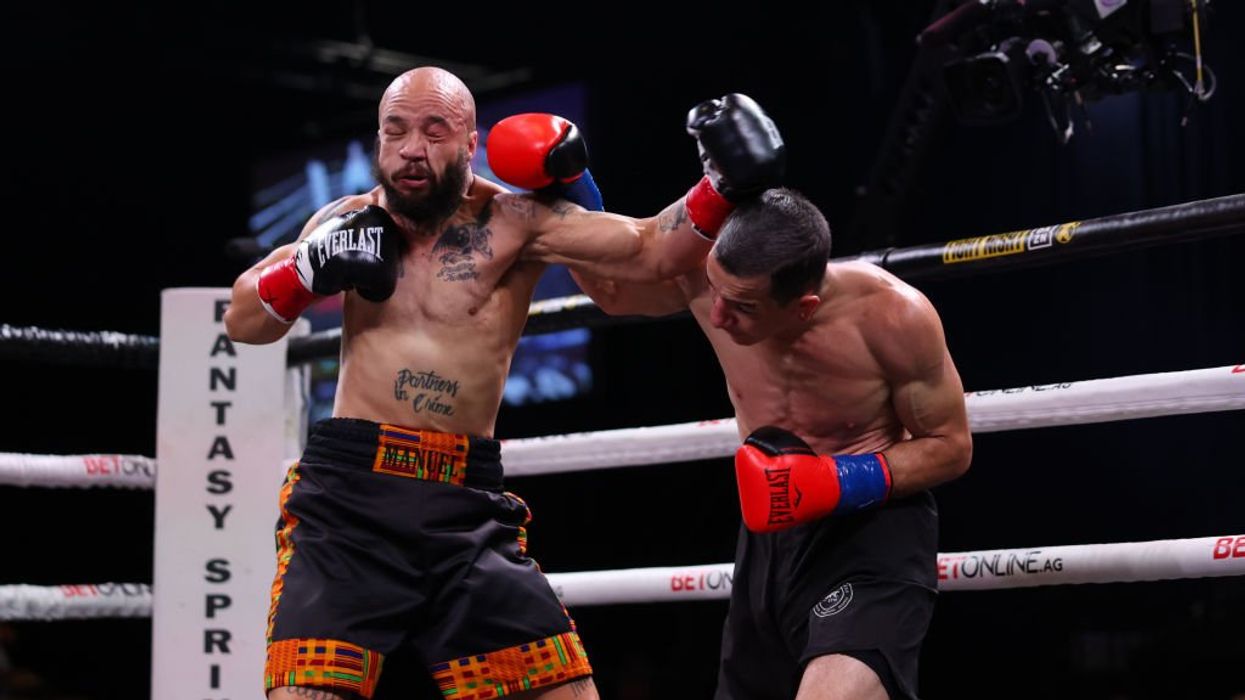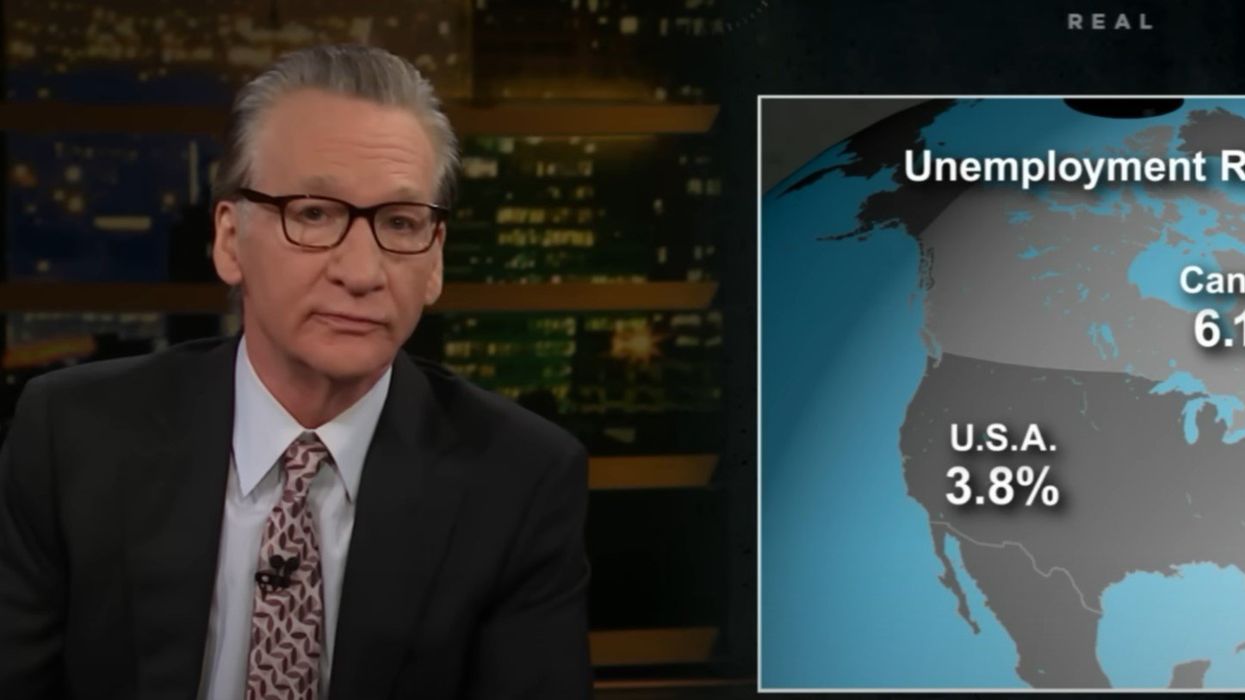
© 2024 Blaze Media LLC. All rights reserved.
Maybe. But the Tea Party likely did as well.
Glenn Beck’s new book, "Miracle and Massacres", is about helping people connect with the true, untold history of America. In chapter two, Glenn tells the story of Shays’ Rebellion, a conflict that crystallized the flaws of America under the Articles of Confederation and led to the Constitutional Convention.
-
War. Economic depression. Excessive taxation. Mass foreclosures. Evil one-percenters.
That might sound like a snapshot of the last five years, but it actually describes the scene in America over two centuries ago.
Massachusetts was one of the states that paid most dearly for the Revolutionary War—not just in blood, but in treasure as well. Due to a lack of funding, state militiamen were often compensated in bonds during the war—bonds they eventually sold for pennies on the dollar to speculators, all while racking up large personal debts.
When the war was over, the debts held by creditors, a group largely consisting of speculators, merchants and other more well-off citizens, came due. At the same time, the government of Massachusetts needed to raise money to pay off the debts they were incurring, and they turned to a variety of sources, including excise, poll, and property taxes.
Weary from their years of fighting, heavily indebted, overly taxed, and unable to find sufficient work in the throes of a vicious post-war depression, the farmers of Western Massachusetts grew ever-demoralized and enraged as personal bankruptcies began to skyrocket. The courts were flooded with cases, foreclosing upon farms and throwing citizens into debtor’s prison.
In August 1786, the aggrieved citizens of Western Massachusetts, largely consisting of war veterans, assembled to discuss a plan of action. Representatives from 50 towns voiced their opinions, foregoing legal remedies such as petitioning Governor James Bowdoin (who himself was a large bondholder), to assist them, and calling for money-printing to lessen their debts.
Daniel Shays was among the men who gathered that night.
While Shays had been designated a captain for his service during the Revolutionary War, he had proven to be neither gallant nor steadfast, dropping out of the battle in 1780. But in the protests against the bankruptcy courts, Shays had a chance to redeem himself.
 Daniel Shays and fellow rebel Job Shattuck. (Image Source: Wikipedia Commons)
Daniel Shays and fellow rebel Job Shattuck. (Image Source: Wikipedia Commons)
On Aug. 29, 1786, Shays was among the 1,500 people who marched on the courthouse in Northampton, some traveling with weapons and marching to the beat of drums. The mob blocked the justices from entering the courtroom, and the jurists wisely decided to close the courts that day, arraigning neither debtors nor tax delinquents.
Shays and the others grew in confidence and began rising against courts all throughout the state. But Massachusetts began to fight back.
Over the following months the legislature imposed a number of decrees. For example, they gave themselves the power to outlaw the writ of habeas corpus and they passed a “Riot Act” allowing law enforcement to strike at insurgents with impunity. Rumors, though false, of atrocities being committed by the state against innocent citizens began spreading throughout Western Massachusetts, pushing men like Daniel Shays toward armed insurrection.
Fearing that the rule of law would completely unravel, Governor Bowdoin raised private money from wealthy citizens in order to hire a large force to handle any potential attacks by the “Regulators.” These citizens were not just interested in protecting the courts, however, they were also interested in protecting the value of their bonds.
What happened next—“Shays’ Rebellion” as we now remember it—must be read in full to be believed, but it ended with cannons being fired, five men dead, Daniel Shays fleeing the state, and a warning shot to the Founders who were debating whether the Articles of Confederation were strong enough to maintain law and order across the Union.
Shays’ Rebellion epitomized a battle that resonates with populists to this day, pitting the so-called common man versus the elites; debtor versus creditor; farmer versus banker, merchant versus lawyer; the people versus its government; anarchy versus the rule of law.
 Daniel Shays anticipated the labor unions during 2011, who in seeking to thwart state government occupied the Wisconsin statehouse in protest of collective bargaining legislation. (Image Source: Getty Images)
Daniel Shays anticipated the labor unions during 2011, who in seeking to thwart state government occupied the Wisconsin statehouse in protest of collective bargaining legislation. (Image Source: Getty Images)
Shays’ Rebellion has plenty of elements adopted by the leftist Occupy movement: advocacy of massive debt repudiation and money-printing; threatening of the financial community; and a tendency toward anarchy and mob rule.
But there are also some elements of the Tea Party movement: opposition to oppressive taxation and anti-elitism come to mind.
Further clouding the picture is that while the men who marched alongside Shays may have been deadbeats (like some of the iPhone wielding 20-something and 60-something Occupiers of today) these men had actually fought for freedom against an oppressive British force and were now disenfranchised by a government whose interests were diametrically opposed to theirs.
[sharequote align="center"]The state would gain legitimacy not at the point of the gun, but through the consent of the governed[/sharequote]
It’s easy to jump to conclusions about Shays’ Rebellion and how it applies today, but that doesn’t mean it’s necessarily fair. This is a complex story that isn’t painted in black and white but rather in shades of gray.
What is clear is that Shays’ Rebellion has had an outsized influence on American history: it catalyzed the movement toward a stronger national government by illustrating the defects of the nation under the Articles of Confederation. This national government then ensured the rule of law, through the creation of a Constitutional Republic whereby the state would gain legitimacy not at the point of the gun, but through the consent of the governed at the ballot box.
A true representative republic.
Ronald Reagan summarized this quite well in his 1987 proclamation commemorating Shays’ Rebellion, stating:
Thomas Jefferson believed that the rebels' activities were motivated by “ignorance, not wickedness.” He pointed out that the majority of the people of Massachusetts had sided with the government, and he concluded that “the good sense of the people will always be found to be the best army.” Although many Americans were satisfied with the Articles of Confederation and were wary of a strong central government, Shays’ Rebellion did give impetus to the Federalists’ call for the establishment of what George Washington termed “a more efficient general government.”
Just months later, and in no small part thanks to the warning sent by Daniel Shays and his fellow farmers, the fate of the Continental Congress would be sealed with the signing of the Constitution.
We’ll pick that up on Monday with the incredible story of the Virginia Ratification Convention.
To read the full, cautionary tale of Shays’ Rebellion, along with 11 other epic and untold stories from American history, check out Glenn Beck’s new book, “Miracles and Massacres.” You can find story summaries, excerpts and audio samples by visiting here.
–
TheBlaze contributor channel supports an open discourse on a range of views. The opinions expressed in this channel are solely those of each individual author.
Want to leave a tip?
We answer to you. Help keep our content free of advertisers and big tech censorship by leaving a tip today.
Want to join the conversation?
Already a subscriber?
more stories
Sign up for the Blaze newsletter
By signing up, you agree to our Privacy Policy and Terms of Use, and agree to receive content that may sometimes include advertisements. You may opt out at any time.
© 2024 Blaze Media LLC. All rights reserved.
Get the stories that matter most delivered directly to your inbox.
By signing up, you agree to our Privacy Policy and Terms of Use, and agree to receive content that may sometimes include advertisements. You may opt out at any time.


